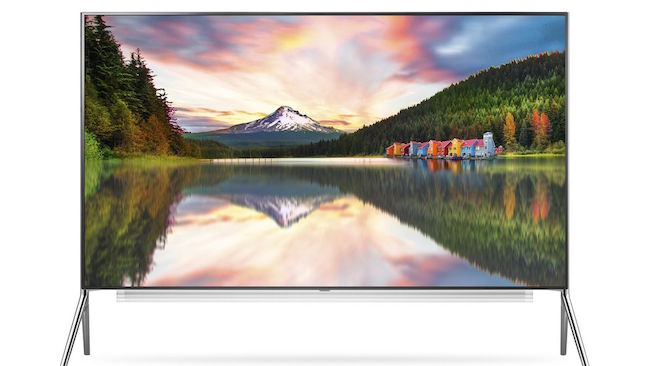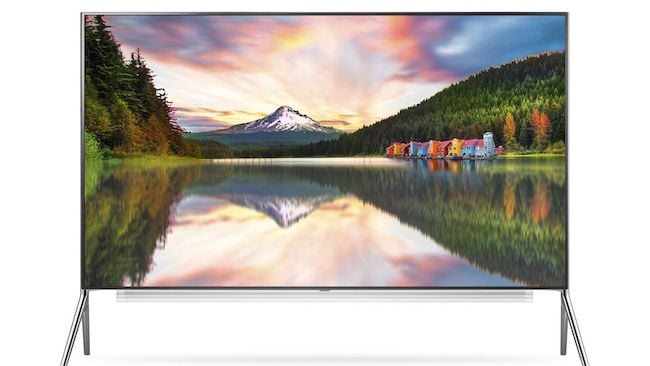
 LG's 98in UH9800: Coming soon to a wall near you
LG's 98in UH9800: Coming soon to a wall near you
It’s very easy to dismiss 8K as unnecessary if you don’t understand how it relates to screen sizes. There’s a very easy way to think about this.
Remember the transition from SD to HD (which is still going on: there’s a very “long tail” of SD users, still largely oblivious of the delights of HD)? One big reason why HD was adopted relatively quickly was that its availability coincided with the arrival of LED TVs. Before these flat screen marvels arrived on the scene, the largest TV size you’d find in people’s homes would be 24” to 30”. Anything bigger than this would be based on projection TV, and these bigger devices looked universally terrible, because SD didn’t have enough resolution to cover their screens in detail.
Conversely, SD TV was capable of looking very good on small screens.
It has to be said that one of the main reasons that made consumers switch to HD was that it quickly became impossible to buy an SD TV. Of course this didn’t stop millions of viewers watching SD on their bigger screens, still looking pretty terrible.
So let’s just assume that the benchmark for HD TV viewing is a 42” LCD TV. This is pretty ideal for HD viewing in a medium sized room. If you sit just far enough from the screen to not see individual pixels then that’s the optimal distance.
Now, what happens if you substitute the screen for one that’s the same size but showing 4K? You might notice a slight difference but not much, if any. This would be, effectively, pointless, unless you have above average eyesight.
But now imagine sitting in the same position but with four 42” screens. So your relationship to the pixels is the same - you’re just far enough away not to see them. That’s the optimal distance for watching 4K. 4K is better in this situation simply because you now have a screen area four times the size and you have four times the pixels to feed those images. Of course you could also have a single 84” screen, which would be ideal
So what about 8K?
The same principle applies. But you’d now need 16 screens, or one screen, twice the diagonal of a 4K, 84” display.
It really is as simple as that. To appreciate the advantages of 8K, you need a screen area sixteen times that of HD. But this is only four times the linear dimensions of an HD screen. Do you have a wall in your house where you can mount a screen that’s four times as high and four times as wide as your current HD screen? If you do, then that’s all you need to know that 8K in the home really does make sense.
Tags: Business


Comments